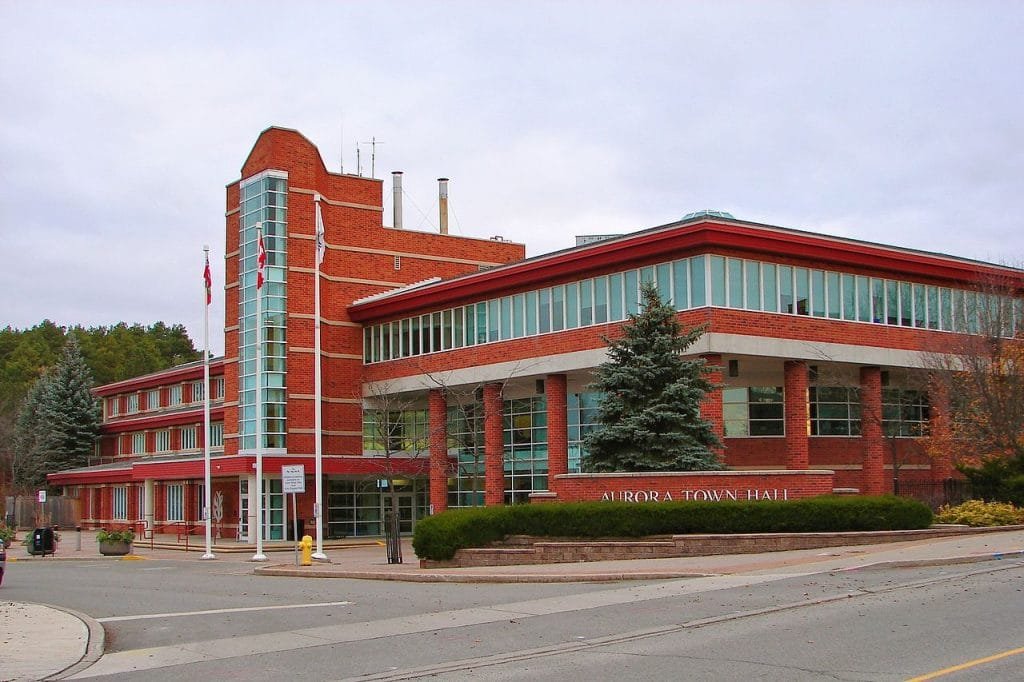
Surface Preparation
- Removing Old Paint: It is crucial to remove old paint before initiating a new paint job for commercial buildings. This ensures the new coat adheres properly and looks smooth.
- Repairing Damages: Address any surface damages, such as cracks or holes. Repairing these imperfections can prevent future issues and ensure a flawless finish.
- Cleaning Surfaces: Thoroughly clean the surfaces to be painted to remove dust, dirt, and grease. This step is essential for even paint application and long-lasting results.
Preparation and Safety Measures
- Gathering Tools and Equipment: Ensure all necessary tools and painting equipment work well, including rollers, brushes, and drop cloths.
- Ventilation and Safety Gear: Proper ventilation is crucial in enclosed spaces to avoid inhaling fumes. Using safety gear such as goggles, masks, and gloves protects against potential hazards.
Choosing Paint and Materials
- Selecting the Right Paint Type: Factors like the surface material, environmental conditions, and desired aesthetics should guide the paint selection. This ensures the paint job is compatible and durable.
- Quality Over Cost: Opting for high-quality materials might seem expensive initially but can be more cost-effective in the long run due to better coverage, quicker drying times, and reduced need for touch-ups.
Budgeting Tips
- Comparing Quotes: Obtain multiple quotes from different painting companies to ensure competitive pricing and find the best deal for your commercial painting project.
- DIY Prep Work: To reduce labour costs, consider handling some preparatory tasks, such as moving furniture or making minor repairs.
Legal and Logistical Considerations
- Compliance and Permits: Verify that all painting activities comply with local regulations and obtain necessary permits if required. This prevents legal issues and ensures the project proceeds smoothly.
- Setting Up Work Zones: Designate specific areas for painting to minimize disruption and maintain organization throughout the project.
Costs and Budgeting for Your Project
Selecting the Right Contractor
Determining project needs and setting a realistic budget is crucial to a successful commercial painting project. Researching potential contractors with a solid track record and reviewing their reputations is also essential. Additionally, contractors with design-build capabilities can offer more streamlined services.
Understanding Interior Painting Costs
Toronto’s interior painting costs typically range from $2 to $6 per square foot. Additional costs may include painting trims at $1 to $2 per square foot, painting ceilings between $1,000 to $1,300, and painting closets ranging from $200 to $500.
Factors Influencing Costs
Several factors affect the cost of painting a house in Toronto, including the quality of paint, non-paint materials, painting tools, and circumstances, such as buying or selling a property. Hiring reputable Toronto painting companies also significantly affects the overall cost.
Commercial Painting Project Costs
The expenses for commercial painting can vary widely, starting from $1,500 and potentially reaching tens of thousands of dollars. Factors that influence these costs include the project size, the type of paint used, the surface preparation required, labour costs, and the accessibility of the painting site.
Estimating a Painting Job in Canada
When estimating a painting job, consider the size of the space, cost of paint, materials and supplies needed, labour costs, and additional expenses such as markup and overhead. The average hourly wage for painters in Canada is $22.51, which should be factored into labour costs.
Cost-Saving Tips
To reduce costs, consider painting while tenants are in the space. This can help avoid additional costs related to vacating the area during the painting process. Planning ahead is crucial, especially for exterior painting, which is in higher demand and may affect availability and pricing.

Benefits of Professional Commercial Painting Service
Expertise and Efficiency
- Extensive Experience: Professional painters bring a wealth of experience, having handled various painting projects and applied thousands of gallons of paint across different surfaces and environments.
- Speed and Precision: Their expertise and access to advanced tools allow professional painters to complete jobs more quickly and accurately, saving clients time and money.
- Quality Materials: Professionals use high-quality paints and equipment, ensuring a durable and visually appealing finish that reduces the need for frequent touch-ups.
Customized and Specialized Services
- Tailored Advice: Professionals provide expert advice on colour choices and finishes, considering factors like lighting and the space’s overall design theme.
- Special Finishes: They are skilled in applying specialized finishes, such as lacquers and high glosses, which require specific techniques for optimal results.
- Challenging Environments: Professional painters are equipped to handle complex areas like high ceilings, ensuring even coverage and consistent quality.
Security and Assurance
- Compliance and Insurance: Reputable painting companies ensure compliance with industry regulations and carry liability insurance, offering clients peace of mind and protection against potential issues.
- Guaranteed Satisfaction: Many professional painters guarantee their work, affirming the quality of their service and commitment to customer satisfaction.
Financial Flexibility and Planning
- Cost Management: Some painting companies offer promotions or financing options, making managing the project’s overall expense easier.
- Strategic Planning: Professionals work closely with clients to understand their needs and preferences, delivering customized solutions that align with their goals and budgets.
Enhanced Property Value
- Aesthetic Improvement: A professionally executed paint job can significantly enhance the appearance and atmosphere of a commercial space, contributing to a positive first impression and potentially higher property values.
- Long-Term Investment: Using premium materials and proper techniques means that the paintwork looks better and lasts longer, representing a wise investment in the property’s future.
Additional Tips
- Contrasting Colours: Carefully selected colour schemes can create a lasting impact, transform a commercial space, and make it more inviting and dynamic.
- Professional Consultation: Professional advice can be invaluable for specific challenges, such as matching historical colours or achieving the right texture.
Project Management and Execution
Project Assessment and Detailed Planning
- Area Analysis: Begin by analyzing the area to be painted, identifying specific areas that require special attention, and setting a realistic timeline for completion.
- Planning for Occupancy: Plan painting schedules according to the building’s occupancy. Start with vacant areas in settings like hospitals, hotels, and medical complexes, and accommodate off-hours work to minimize disruption.
Painting Process and Techniques
- Primer Application: Apply primer to enhance paint durability and ensure better coverage. This step is crucial for long-lasting results.
- Paint Application Method: Depending on the specific requirements of the commercial space, choose the right method for applying paint, such as rollers, brushes, or sprayers.
- Top-Down Approach: Start applying paint coats from the top of the walls and work downwards to prevent drips and ensure an even coat.
Achieving a Smooth Finish
- Consistent Technique: Use pressure and techniques like ‘tipping off’ and ‘feathering’ to achieve a smooth finish. These methods help in minimizing brush marks and uneven texture.
- Final Touches: Sand and buff areas to eliminate minor imperfections, and carefully remove painter’s tape immediately after the paint has been set to ensure a clean line.
Involvement and Management of Professionals
- Team Collaboration: Conduct meetings with managers and team leads and involve commercial painters in the planning process to ensure all aspects of the project are covered and understood by everyone involved.
- Task Organization: Break the project into manageable tasks, organize these tasks by building sections, operations, or days, and manage them effectively to identify and solve any shortcomings quickly.
Review and Finalization
- Final Walk-Through: Conduct a final review with all commercial painters to identify any issues or areas needing additional work. Ensure the project meets all required expectations and results before concluding.

Trends and Techniques in Commercial Painting
Innovative Paint Technologies
- Smart Paint Technology: Utilizes conductive nickel grids and electromagnetic sensors to transform walls into interactive displays, enhancing aesthetics and functionality in commercial spaces.
- Self-Cleaning Paints: Incorporate nanotechnology with titanium dioxide, enabling surfaces to repel water and dirt, significantly reducing maintenance needs.
- Antimicrobial Coatings: These paints contain silver nanoparticles that actively kill microbes upon contact, which is ideal for environments requiring stringent hygiene standards like hospitals and schools.
- Solar Paint Technology: Innovative light-sensitive particles convert sunlight into energy, turning exterior walls into functional solar panels.
Current Painting Trends in Commercial Spaces
- Colour Zoning: Utilizes bold colours to define and divide open spaces, enhancing commercial interiors’ visual dynamics and organizational flow.
- Geometric Patterns and Textured Surfaces: These design elements create unique, engaging environments, including everything from subtle textures to bold, eye-catching patterns.
- Biophilic Design: Incorporates elements of nature to boost occupant connectivity to the natural environment, promoting well-being and productivity.
- Accent Walls and Colour Blocking: Uses vibrant colours to create focal points, adding depth and interest to commercial interiors.
Sustainability and Health in Paint Choices
- Low and No-VOC PaintsLow- and no-VOC paints: These paints focus on sustainability by reducing harmful emissions.
- Air Purifying Paint: Advanced formulations help remove toxins and improve air quality, making these paints particularly beneficial for enclosed public spaces.
Technological Advancements in Commercial Painting
- Digital Colour Matching and CAD: These technologies improve precision in paint application, ensuring consistency and meeting specific aesthetic requirements.
- Interactive and Augmented Reality Elements: Future trends include integrating AR and interactive features in paints, expanding the functionality of painted surfaces beyond traditional aesthetics.
These trends and techniques enhance the aesthetic appeal of commercial spaces and contribute to functionality, sustainability, and health, reflecting a holistic approach to modern commercial painting.
Contact Us
Phone: (647) 889-7967
Email: info@jxfpaintingservice.ca




